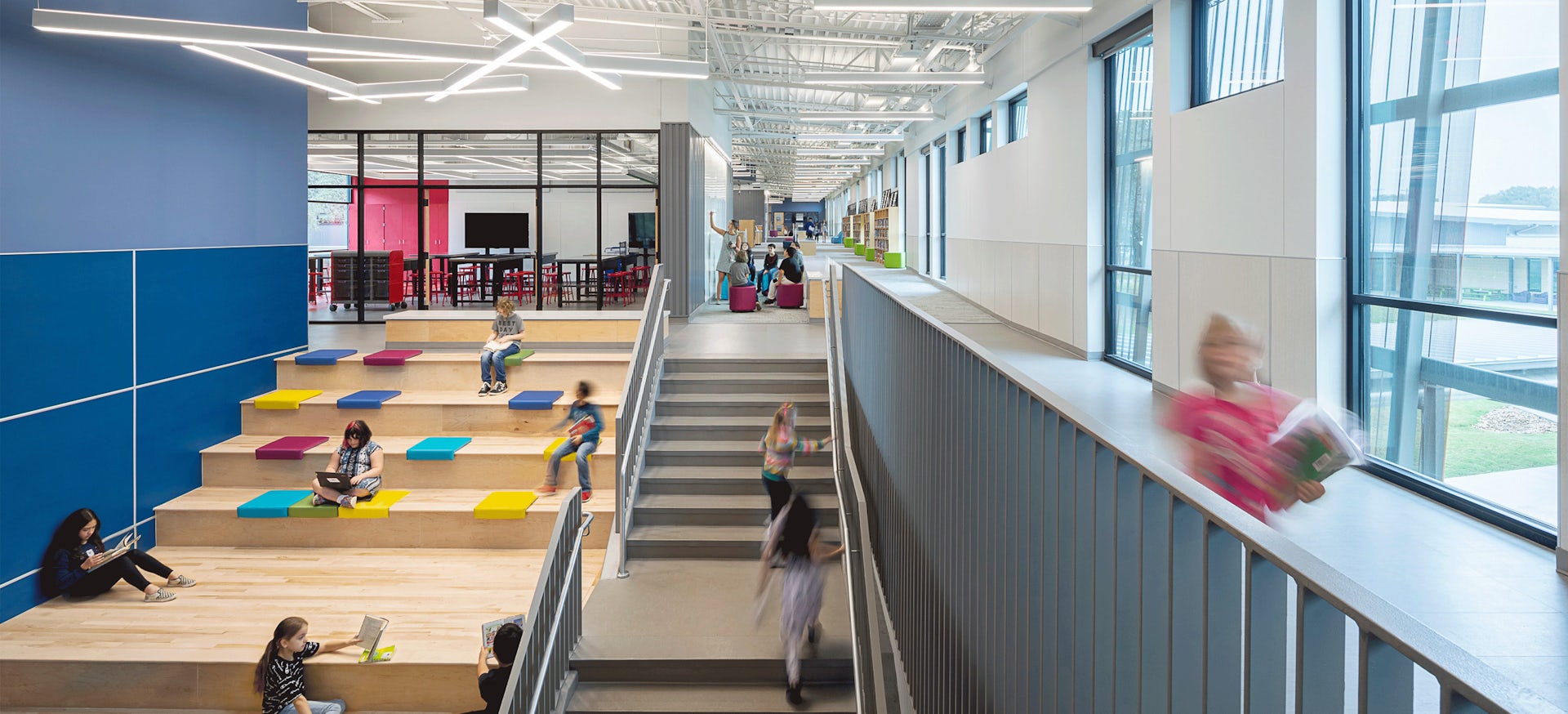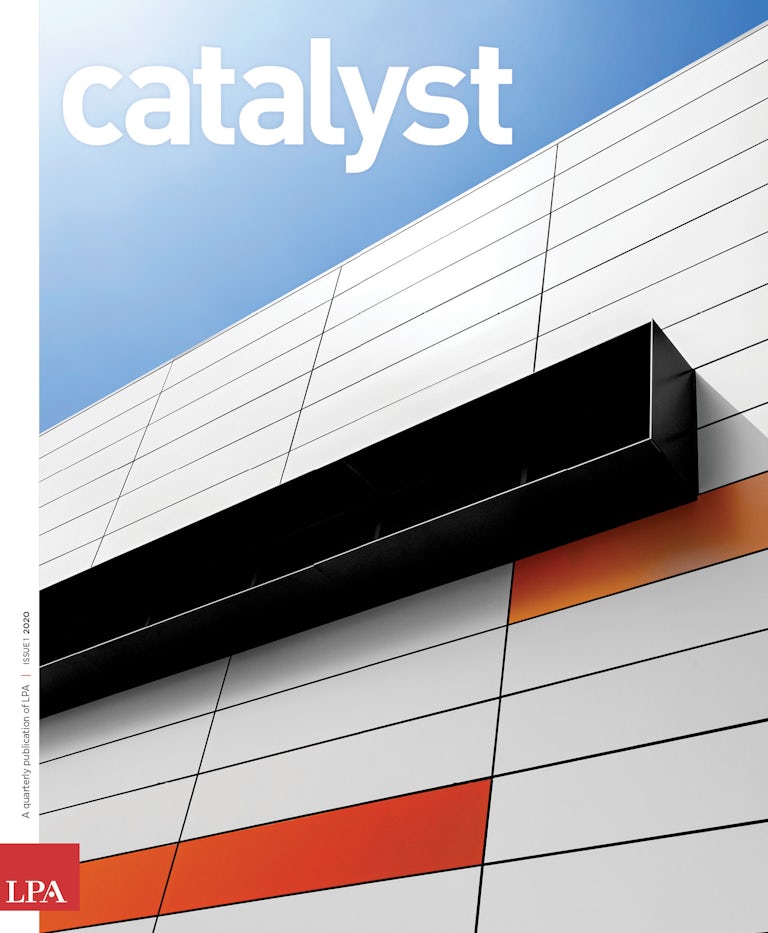Soon after Menchaca Elementary School opened in January, teachers began organizing different experiences to help students learn about the new campus. Fifth graders were challenged to use mobile devices to create video commercials about the different spaces, the furniture and their expectations for the school. Around the campus, students started exploring, finding different uses for the variety of scaled spaces on campus, both inside and out.
“I love to come from my room and just to walk through the learning wing so I can see all the kids using the various spaces,” said music teacher Leslie Rubio. “Students are really enjoying a lot of places they can learn.”
Located in the hills south of Austin, Texas, Menchaca replaced an aging campus, which was known for dark rooms and bad ventilation. The new 98,600-square-foot campus, one of the first design-build public K-12 schools in Austin, was developed in a tight six-month time frame, including an extensive community engagement and research process with the Austin Independent School District. The designers worked closely with a Campus Architectural Team, which included teachers, parents and members of the community. Students were also brought into the process to share their reactions to different ideas.
Texas Students Embrace Their New School
Students and teachers at Menchaca Elementary are finding different ways to use their new campus.
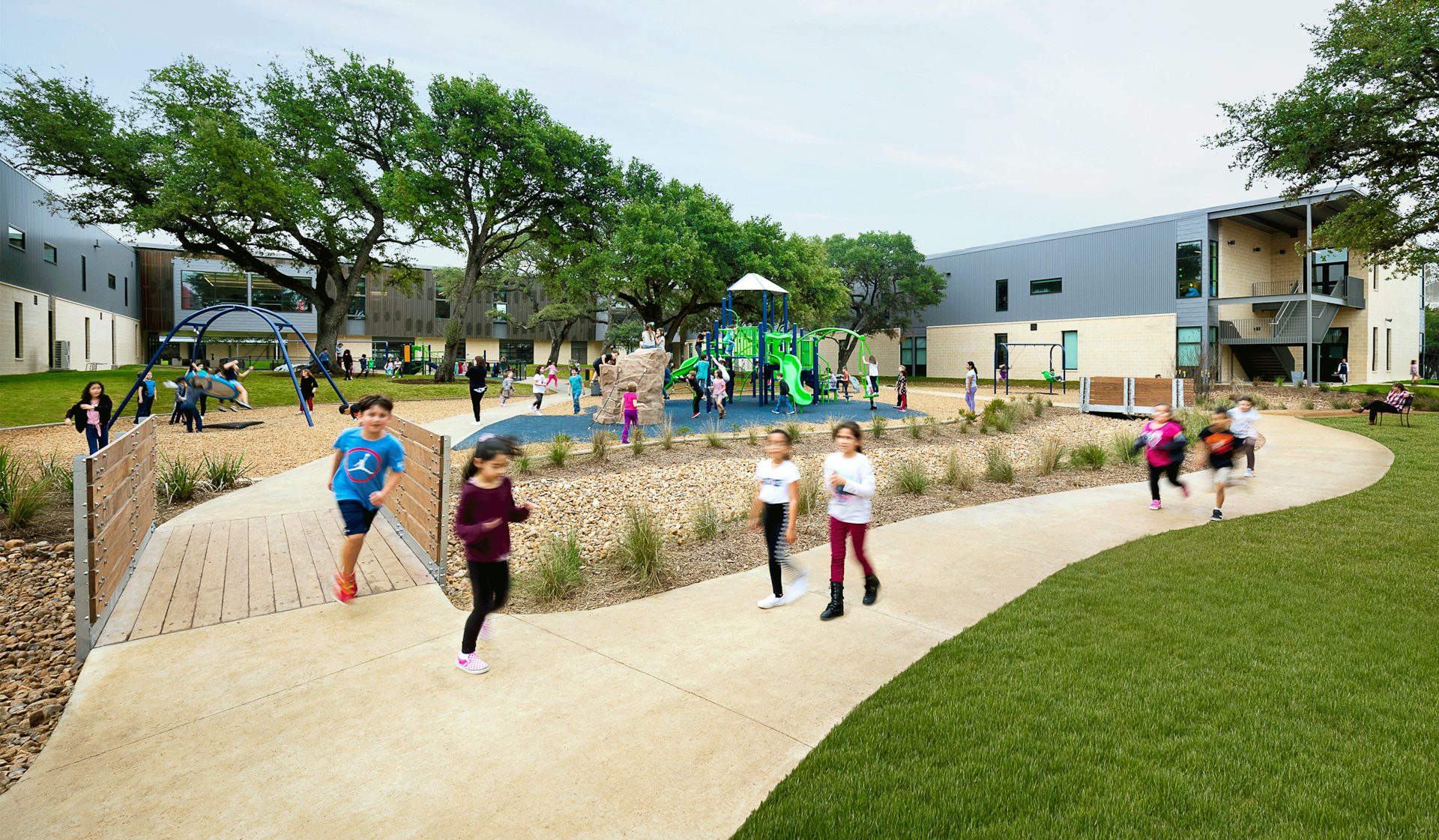
“We had a lot of meetings to talk about the priorities of our community,” says Menchaca Principal Eliza Loyola. “What are things we want to make sure make it into this space. What are things that we want to make sure resonate within our community. That was the process from the very beginning to the very end.”
One of the main priorities: take full advantage of the existing site, including heritage oak trees.
“We wanted to build within that setting, not on top of that setting,” Loyola says. “From the beginning, LPA understood that and really honored that process and understood why the land was so important to us.”
Loyola describes the school as an “industrial modern campus with a lot of natural elements.” The exteriors are steel and gray, with natures dominant around the campus. Three buildings are organized around courtyards, featuring the oak trees; more than 30 percent of the site is open space, creating direct links between the outdoors and learning environments.
The learning village is a really unique concept that Austin ISD is piloting. Each of the learning villages has small group rooms, where students can create their own learning experiences. - Kate Mraw, Design Director

The two main buildings are linked by covered walkways to a shared, two-story library and media center with makerspaces and quiet areas for studying. Teaming and collaboration spaces are available throughout the campus, which includes four “learning villages,” collections of studio spaces and meeting areas.
“The learning village is a really unique concept that Austin ISD is implementing,” LPA Design Director Kate Mraw. “Each of the learning villages includes studios, collaboration space, and small group rooms, all with transparent or operable connections to each other, where students can create their own learning experiences.”
All the studios have access to natural light, a sharp contrast to the previous campus. And a large extent of the circulation occurs outside, a purposeful shift to encourage both teachers and students out of their rooms, while reducing the overall square footage of the building’s interior space.
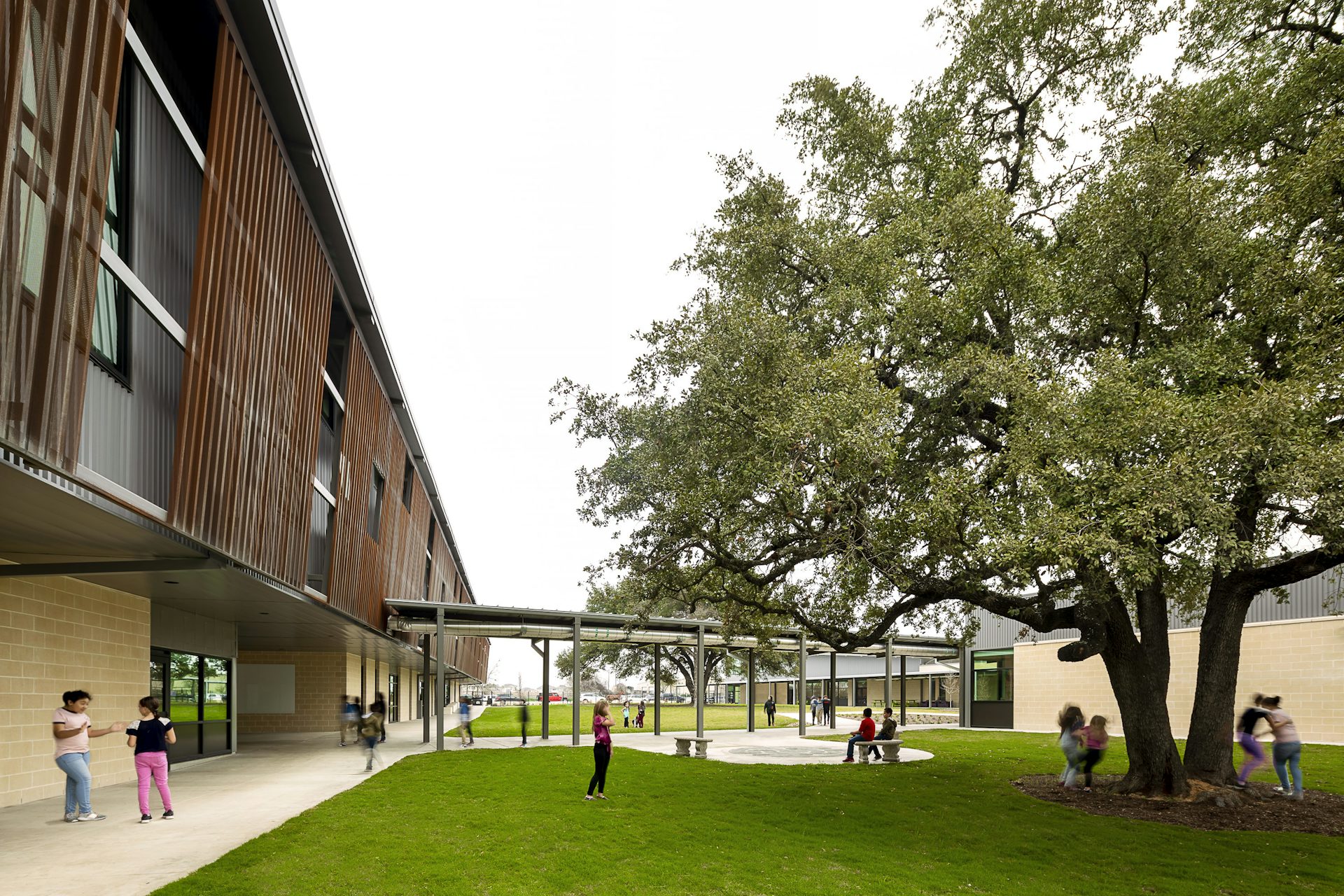
“The design of having three separate buildings was so that our students were interacting with the indoors and outdoors repeatedly through the day,” Loyola says. “Even if it’s raining, even if it’s cold, even if it’s hot, they’re going to go outside and know what that’s like.”
The connection to the outdoors is impacting everyone on campus, Loyola says. The ability to experience the outdoors and breathe fresh air “has been critically important for this campus,” Loyola says. “To be in a space that has a real focus on sustainability and health and wellness has been very important for us.”

The design of having three separate buildings was so that our students were interacting with the indoors and outdoors repeatedly through the day - Eliza Loyola, Menchaca Principal
Since the school opened, teachers and students have been finding different ways to use the spaces. At any time of the day, students can be found working in the collaboration areas or clustered in a group under one of the oak trees. There are two makerspaces—one “messy” space where students can tinker, glue and get dirty; the other is a tech space with video recording equipment and a green screen for students to make their own productions. Teachers are settling into their professional spaces, which allow them to meet with students outside the classroom.
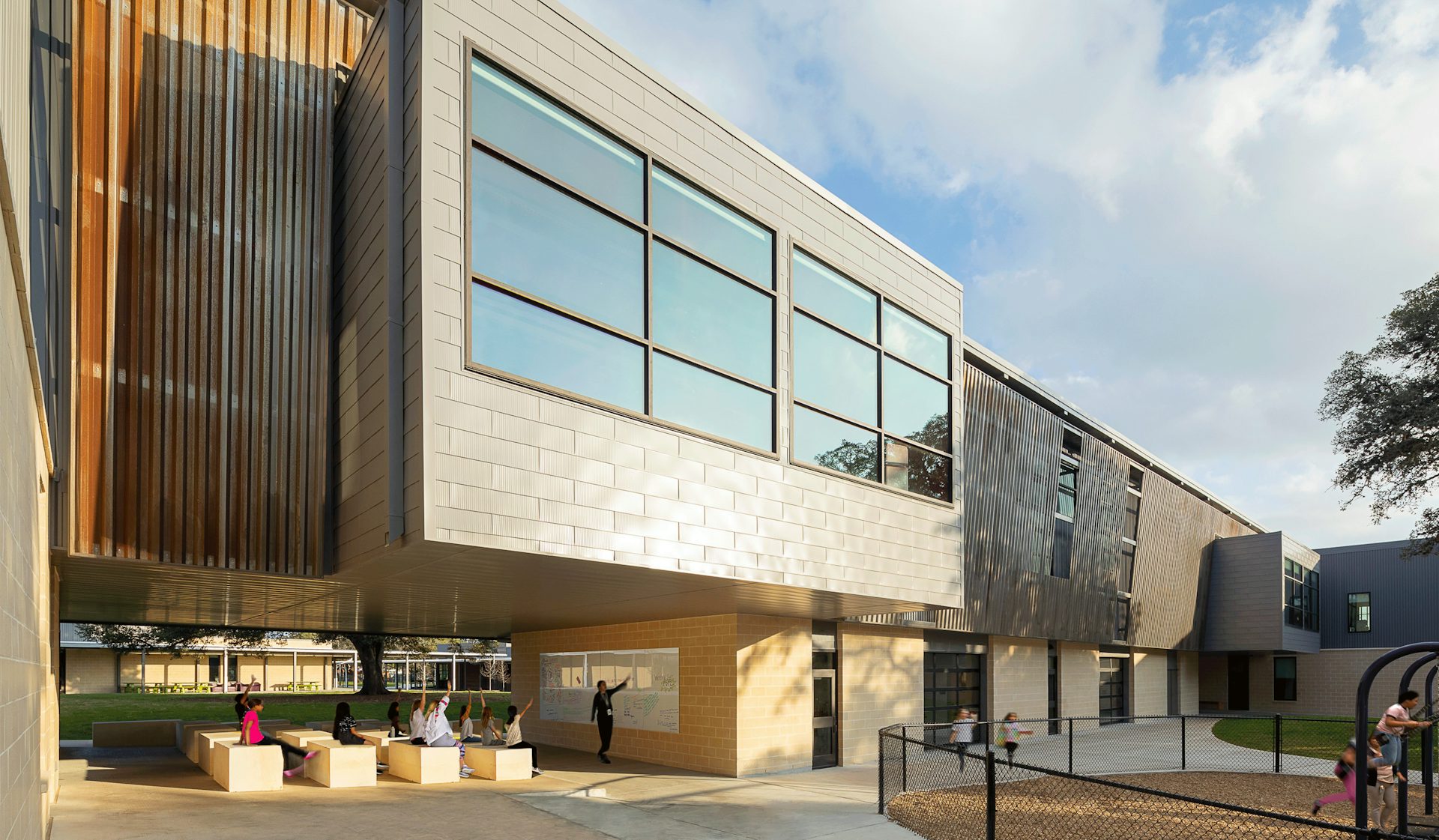
Everyone involved with the project has developed their favorite spots on campus. For Loyola, it’s the wooden “learning stairs” in the north and south wings of the campus. Students use the stairs to work independently, play games or make presentations. “You’ll sometimes find adults working there, checking their email,” Loyola says. “I worked there last week and did about 20 minutes of emails and was able to watch classes go in and out of the building.”
Rubio, the music teacher, says it’s been amazing to watch kids work in smaller groups, taking learning into their own hands. And she loves her new music room, which includes more amenities than would be typically found in an elementary school music room. “The first time I walked into my new studio, I didn’t dream I would have that many cubbies,” she says.

“I just started squealing and jumping up and down, I was so thrilled.”
But, more than anything, she enjoys the natural light and easy access to the outdoors. Rubio experienced health issues on the old campus and considered giving up her teaching role. The new school has re-invigorated her love for teaching and improved her health along the way.
“I wake up excited about my studio and all the possibilities that I have to use the spaces,” Rubio says. “It’s exciting to be 23 years into my career and have a fresh outlook on teaching this late in the game. It’s inspiring.”


